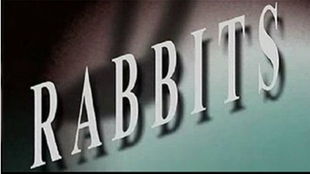Content:
Fishing is an ancient pastime that has been cherished by anglers around the world for centuries. One of the most crucial aspects of successful fishing is setting up a well-placed and effectively managed fishing nest, also known as a fishing hole or a fishing spot. A well-prepared fishing nest can significantly increase your chances of catching fish. In this article, we will delve into the essential tips and techniques on how to open a fishing nest like a seasoned pro.
Understanding the Basics of a Fishing Nest
Before we dive into the specifics of setting up a fishing nest, it's important to understand what it is. A fishing nest is a designated area in a body of water where fish are likely to congregate. This could be due to various factors such as food availability, structure, or depth. By identifying and preparing a fishing nest, you can increase your chances of encountering fish during your fishing trip.
Choosing the Right Location

The first step in setting up a fishing nest is to choose the right location. Here are some factors to consider:
- Water Depth: Fish often prefer certain depths depending on the species and the time of year. Research the species you're targeting and find out their preferred depths.
- Structure: Look for natural or artificial structures such as rocks, logs, or weed beds that can provide cover and attract fish.
- Current: If you're fishing in a river or stream, consider the current's direction and strength. Fish often hold in areas where the current is slower.
- Food Sources: Identify areas where fish are likely to find food, such as areas with vegetation, baitfish, or other food sources.
Marking the Spot
Once you've identified a potential spot, it's important to mark it for future reference. Here's how to do it:
- Use a GPS: If you have a GPS device, mark the spot on your map. This will allow you to return to the same location in the future.
- Physical Markers: If you're fishing in a lake or reservoir, you can use a piece of string or a buoy to mark the spot on the water's surface.
- Memory and Notes: If you're not using technology, take mental notes of the surrounding landmarks or take a photo to remember the spot.
Setting Up the Nest
Now that you have a marked spot, it's time to set up your fishing nest:
- Clear the Area: Remove any debris or obstacles that might interfere with your fishing line or lure.
- Cast Your Line: Toss your line into the marked spot and let it settle. This will give you a sense of the depth and current conditions.
- Adjust Your Lure: Based on the conditions, adjust your lure or bait to match the environment. For example, if you're fishing in a weedy area, use a lure that can navigate through the vegetation.
- Patience is Key: Allow your lure or bait to sit undisturbed for a while. Fish may take some time to approach a new lure or bait.
Maintaining the Nest
A well-maintained fishing nest can be a game-changer. Here are some tips for keeping your nest in top condition:
- Regular Check-ins: Visit your nest regularly to check on its condition and make any necessary adjustments.
- Respect the Environment: Avoid disturbing the natural habitat around your nest. This will help maintain the balance of the ecosystem and ensure that fish continue to congregate in the area.
- Leave No Trace: Always clean up after yourself and respect the fishing spot for future anglers.
Advanced Techniques
For those looking to take their fishing to the next level, here are some advanced techniques:
- Scouting: Spend time on the water before your fishing trip to scout for potential nest locations.
- Baiting: Use bait to attract fish to your nest. This can be particularly effective in areas with low fish activity.
- Artificial Nesting: In some cases, you may need to create an artificial nest using natural or artificial materials to attract fish.
In conclusion, setting up a fishing nest is an art that requires patience, observation, and a deep understanding of the fish you're targeting. By following these tips and techniques, you'll be well on your way to becoming a master of the fishing nest. Happy fishing!












